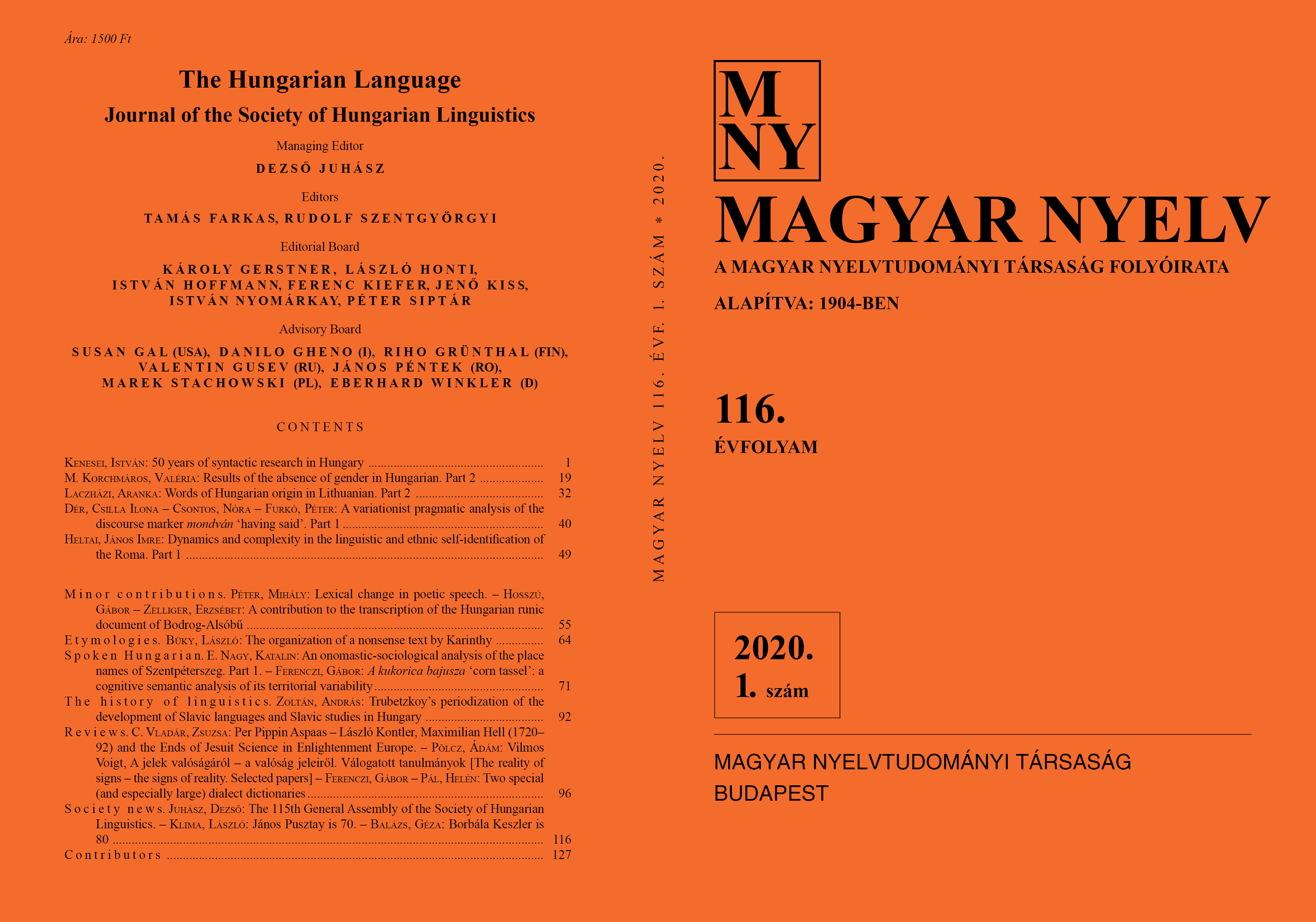An onomastic-sociological analysis of the place names of Szentpéterszeg
Part 1.
DOI:
https://doi.org/10.18349/MagyarNyelv.2020.1.71Keywords:
sociology of toponyms, age, gender, name system, name community, knowledge of toponymsAbstract
Questions of the use of toponyms have been giving researchers food for thought for a long time, so it is not surprising that a new subdiscipline has emerged which is called the sociology of toponyms. In this paper I aim to introduce a new case study in order to extend the range of empirical examinations on the sociology of toponyms. I analyse the toponyms of Szentpéterszeg, a village in Hajdú-Bihar County, Hungary, in terms of the following aspects: I explore the impact of gender and age on the knowledge of toponyms, and I classify some elements of the toponym system by their level of familiarity. Finally, I conduct a name community examination, too, by which we can get closer to the definition of the concept of name community.
Downloads
Published
Issue
Section
License
Copyright (c) 2024 Katalin E. Nagy

This work is licensed under a Creative Commons Attribution-NonCommercial-NoDerivatives 4.0 International License.
Magyar Nyelv is a Diamond Open Access periodical. Documents can be freely downloaded and duplicated in an electronic format, and can be used unchanged and with due reference to the original source. Such use must not serve commercial purposes. In the case of any form of dissemination and use, Hungarian Copyright Act LXXVI/1999 and related laws are to be observed. The electronic version of the journal is subject to the regulations of CC BY-NC-ND (Creative Commons – Attribution-NonCommercial-NoDerivatives).
The journal permits its authors, at no cost and without any temporal limitation, to make pre-print copies of their manuscripts publicly available via email or in their own homepage or that of their institution, or in either closed or free-for-all repositories of their institutions/universities, or other non-profit websites, in the form accepted by the journal editor for publication and even containing amendments on the basis of reviewers’ comments. When the authors publicize their papers in this manner, they have to warn their readers that the manuscript at hand is not the final published version of the work. Once the paper has been published in a printed or online form, the authors are allowed (and advised) to use that (post-print) version for the above purposes. In that case, they have to indicate the exact location and other data of the journal publication. The authors retain the copyright of their papers; however, in the case of an occasional secondary publication, the bibliographical data of the first publication have to be included.



